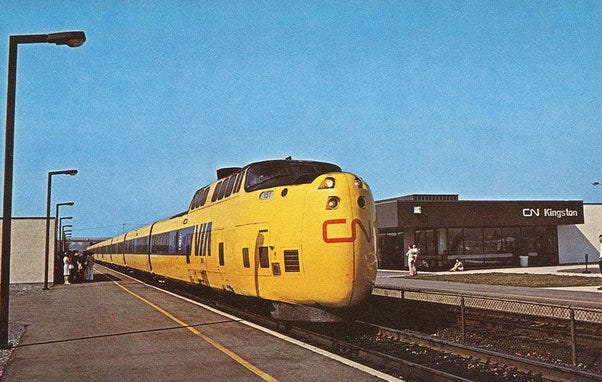There is probably no bigger project in Canada that pops its head into the mainstream every decade or so, mused then disappears. It is momentous and I think its significance and importance is growing. We should revisit this topic with very serious consideration. I think there is a business case.
What is the difference now? Mass immigration. With an intent to build Canada to a population of 100M, which will just keep growing at that point more naturally in itself. That provides a substantial user base and increases functionality. Critical mass, if you will.
I’ve long advocated for building out Canada to have more economically viable areas, cities/towns, to live in as an option. We are essentially shuffling the population throughout five areas. Building a high-speed rail system will help build future growth communities; providing that connectivity and economic generation. It makes more choices viable for people.
Canada is the only G7 nation that does not have high-speed rail. CN’s TurboTrains was the last serious attempt to put high-speed rail into use in Canada which was retired in 1982 due to so many technical and reliability issues. In the early 2000s Bombardier went on a dog and pony show with its JetTrain just to be shelved off as well.
The reason the idea of building high-speed rail in Canada gets abandoned so often is because of its economics, technicalities, and political will (risk). What Canada doesn’t do good is think long-term in its executions and high-speed rail has to be a part of the future and the risks are diminishing.
There is a question if projects of this scope can be done in the Western world, more specifically in North America without them being a complete disaster. I will join alarmists pointing out the complete disaster that is California’s train project that aims to connect LA – Central Valley – San Francisco. It cost over $1B USD just in environmental approvals and not a single track laid in 15 years. The costs have ballooned to over $100B USD.
Between the example above and what we see the with Trans Mountain pipeline expansion, it’s no wonder for the size of the gulp. A high-speed train system in Canada is also a much bigger project just because of the distances. It also has to be high frequency rail system so in other words we will need more actual trains as well.
The challenge, besides avoiding red taping it to an enormous price tag, becomes laying tracks and the layout of it. Laying tracks isn’t as simple as laying tracks as new dedicated tracks for high-speed, high-frequency rail are needed and not all of the current tracks can be upgraded everywhere. High-speed trains travel about twice the speed of VIA Rail. It becomes a physical space scarcity which adds to the cost.
The point isn’t to build a cross-country system but highly functional regional systems that can be joined together many decades later. Corridors such as Chilliwack to Vancouver, Calgary - Red Deer - Edmonton (which has the potential to connect to Jasper with a line into BC), and of course Quebec City - Montreal to Toronto which has the potential to serve the biggest share of Canada’s population. The stops in between and expanded from those systems add organic productivity.
Canada hasn’t had its golden age of infrastructure. We have been spoiled with land and the short-term mentality of “we will just add another lane”. Now we are running out of space to build adequate, livable, and affordable housing. Moving people with out-of-date poorly planned roads is having its impact. Concentrated economic zones are adding to the pain.
Canada will have no choice but to plan out the country and enter into grand projects. It’s our opportunity to showoff to the world that we can build projects at scale with speed and efficiency. One way or another it’s not something we can fumble.


